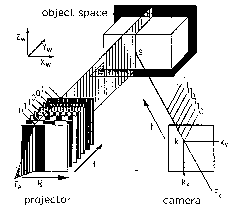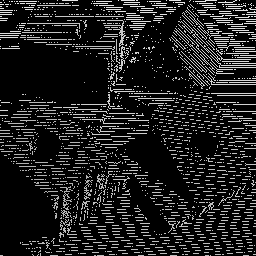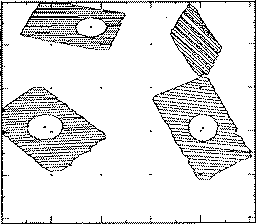


Previous: Introduction Up: 3D-Modeling for the Analysis of Range Next: Geometric Model



There are several approaches for the acquisition of depth (e.g. the distance between an object point and the focus of the camera) [12] [21] [2]. The photogrammetric computation is based on triangulation. Passive systems use two or more cameras [12].

Active systems use laser scan [2] or patterned [3], coded [18] [21] or structured light combined with a single camera (Figure 1). Recent research deals with active vision by focusing, zooming or moving the camera. The resulting image sequences are used to evaluate depth.


The result of those methods are very similar. It is always a two dimensional picture containing depth values instead of grey values (Figure 2). This kind of of data is also called 2 1/2 dimensional data.
The process of fitting three dimensional models with range data is very time consuming. So a first step is to detect areas of interest by a very easy and therefore fast algorithm. The next step is to detect single geometric features in the neighborhood of those areas of interest (Figure 3).
Tools for detecting plain or cylindrical surfaces, edges and vertices exist [9]. In contrast to two dimensional images the range data yields three dimensional coordinates of vertices, also orientation of edges and surfaces and area of visual surface patches [7]. Additionally, it is possible to detect whether a found edge is a ridge or a step. A ridge links two surface patches thus defining a neighborhood. If the edge marks a step, the step is also found in depth data and the neighborhood in the image is just caused by the viewing angle.


